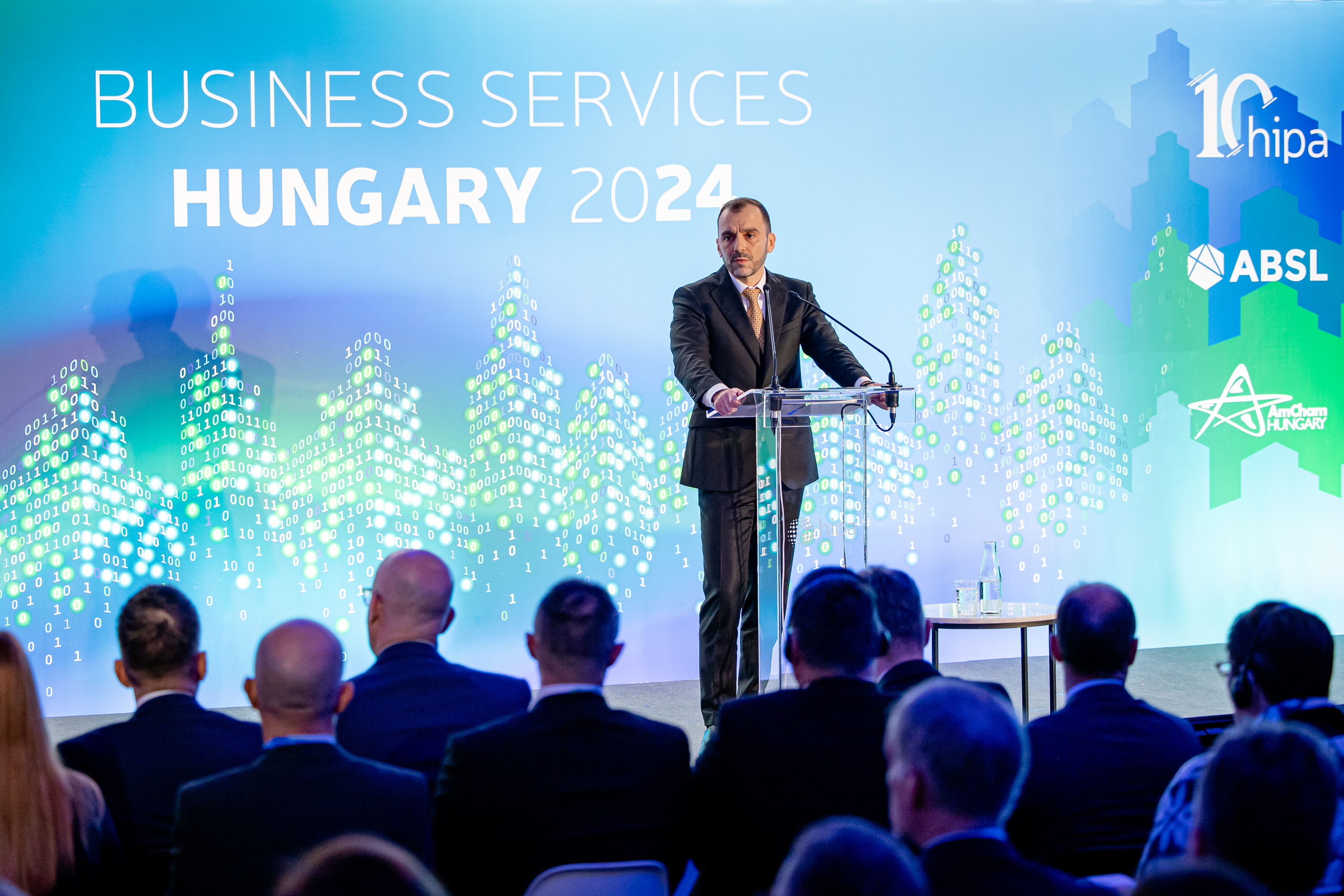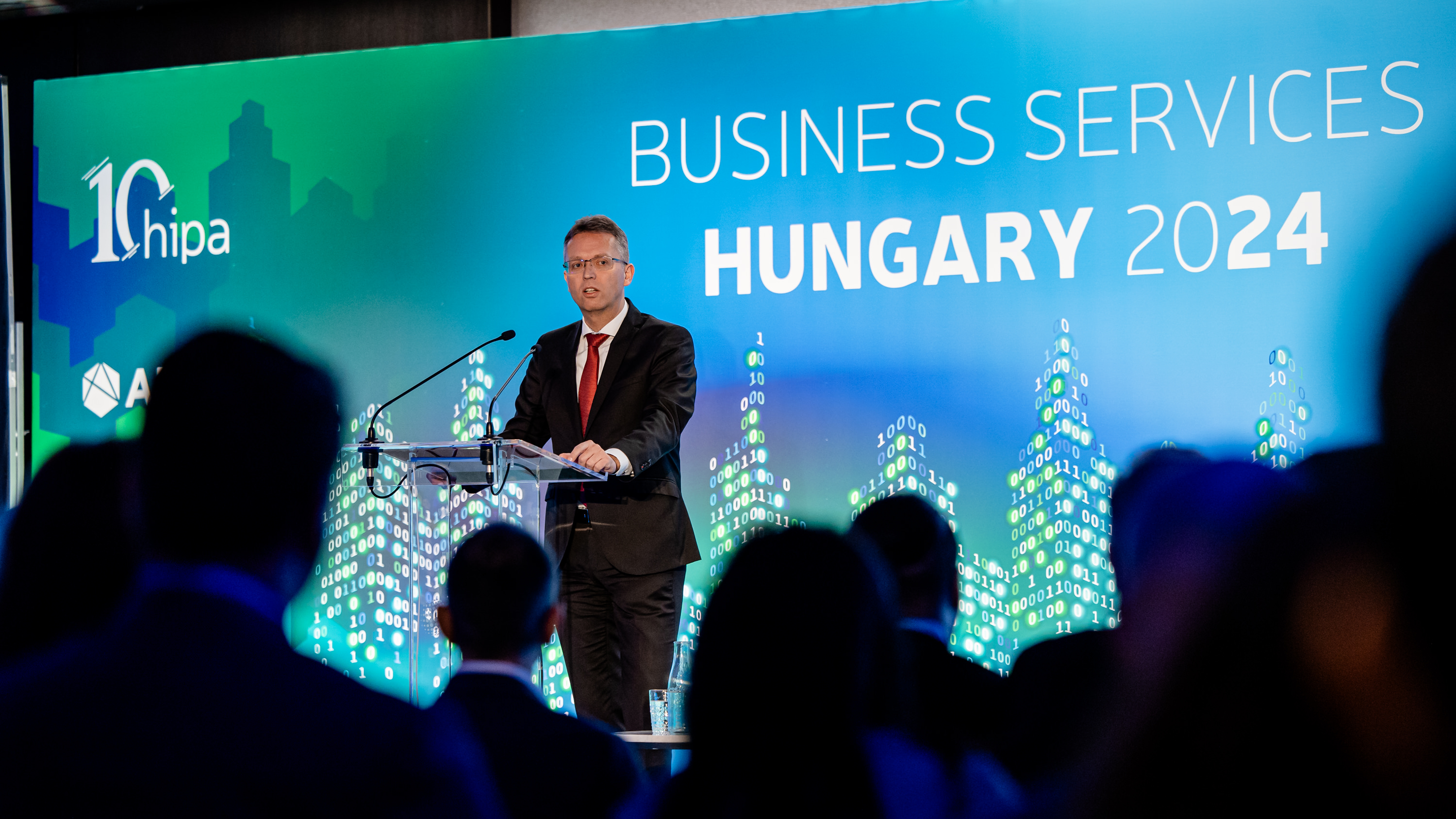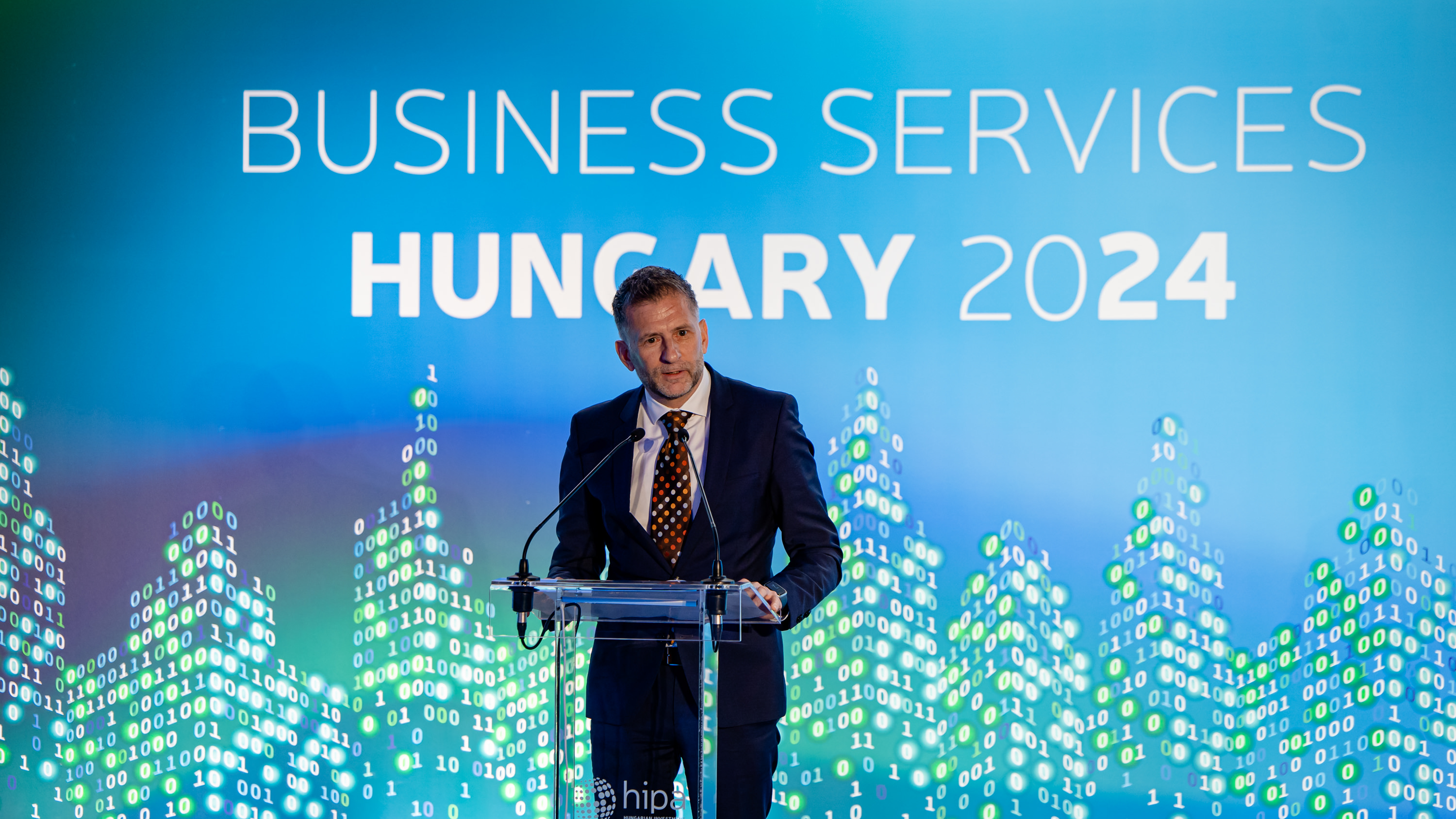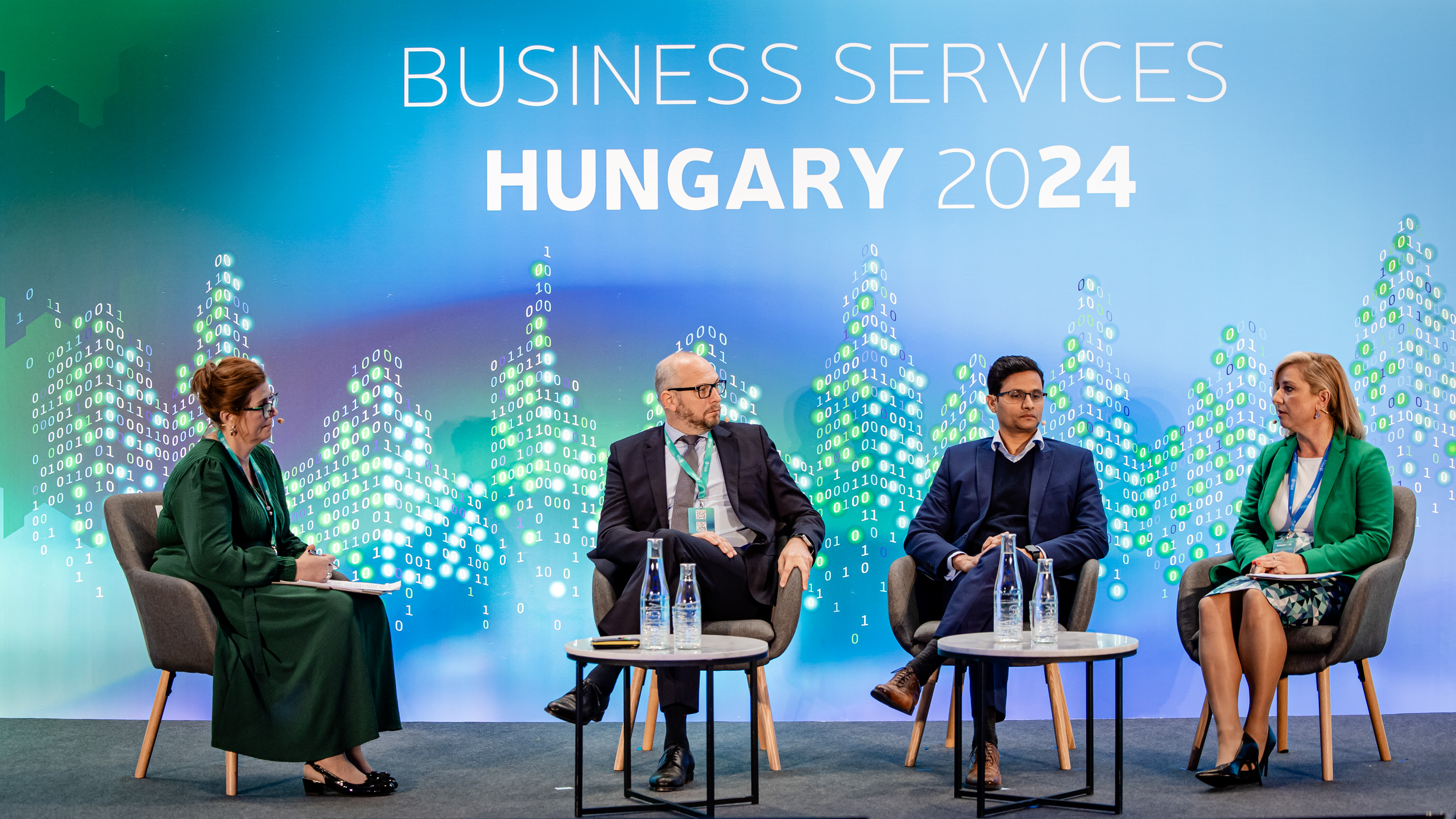
Outstanding Results at Regional Level in the Hungarian BSC Sector
2024. 11. 14.
The business services center (BSC) sector has closed another record year in Hungary, achieving outstanding results at the regional level, according to the latest survey conducted in collaboration with the HIPA Hungarian Investment Promotion Agency, the findings were presented at one of the most prestigious events in the industry, the Business Services Hungary 2024 conference in Budapest.
The BSC sector's history in Hungary is a “success story” – underlined István Joó, Government Commissioner for the Implementation of Large Foreign Direct Investments and CEO of HIPA, reviewing the sectoral survey, that was conducted for the fifth time.
He noted that Hungary boasts one of the most mature BSC ecosystems in the Eastern-Central European region. 60 percent of the BSCs have been operating for more than ten years, contributing 3 percent to Hungary's GDP.
The growth remains unshakable, with over 110,000 employees and a community of 215 companies making up the Hungarian BSC sector. Furthermore, the number of positions in research and development has doubled in just one year, demonstrating the increasing focus on quality – said István Joó.

The conference was organized by HIPA, the American Chamber of Commerce in Hungary (AmCham Hungary), and ABSL Hungary, the Hungarian member of the Association of Business Service Leaders (ABSL), the international organization of BSC’s. Over a hundred industry professionals attended the event, including many company executives. Through presentations and panel discussions, they reviewed the past year’s developments and analyzed the opportunities and challenges ahead, from securing skilled labor to facing increased competition from distant regions like Latin America and Southeast Asia.
In his opening address, István Joó emphasized that HIPA has been fully supporting the BSC sector, contributing to the creation of 20,000 jobs through 106 projects.
Looking ahead to 2030, the main goal is to increase employment in the sector to 150,000, and doubling the workforce in provincial cities, especially university towns. Another key objective is to increasingly connect to the trend towards automation that leaves room for high-value-added activities, aiming to be a regional leader by the end of the decade.
He also highlighted that economic neutrality, as a fundamental principle of investment promotion, will have a more prominent role, as HIPA is set to attract more Eastern partners, alongside continued support for Western companies.
Balázs Hankó, Minister of Culture and Innovation, stressed the need for a competitiveness shift across Europe, which the Hungarian model could support. He noted that one of the core principles of this model is aligning higher education, vocational training, and research and innovation support with the needs of the economy. Over the past five years, the number of R&D professionals in the economy has doubled, and the number of PhD students has also doubled within the same timeframe.
He added that in the past year, Hungary’s innovation potential improved by 2.1 percent, and six out of ten adults participated in adult learning, mostly in the framework of corporate training.
All these efforts ultimately serve the community, the nation, and its fundamental unit, the family. “This is what the Hungarian model is all about” – underlined Balázs Hankó, adding that as a testament to the competitiveness of the model, Hungary is on track to have a Top 100 university and world-class vocational training by 2030, as well as a Top 10 innovation system in Europe.
András Kohl, Vice President of ABSL Hungary, pointed out that the BSC sector employs over 31 million people across the EU and contributes approximately 22 percent to gross added value. BSCs are the “innovation engines” of Europe, crucial for its competitiveness. However, it is vital to continuously develop skills in line with global trends.

Zoltán Szabó, President of AmCham Hungary, emphasized that despite the challenges of recent years, the sector has retained its attractiveness, providing a solid foundation for future growth. However, it is essential to ensure a skilled workforce in the long run because “investors will move on if they don't find it.” This is why it is crucial to develop the educational system, where “there is still much work to be done” – he noted.
During the conference's main panel discussion, Monika Slomska, head of the consulting firm Knowledge Pyramid, which collaborated on a sector survey series, highlighted that Hungary has become one of the most popular nearshore outsourcing destinations in Europe. This is partly due to robust government support, resulting in the establishment of numerous R&D centers and significant investments in emerging technologies like the Internet of Things (IoT) and Artificial Intelligence (AI).
Ákos Janza, Vice President of AmCham Hungary, acknowledged that the past four years in US-Hungarian relations "haven't always been easy," but he expects a return to the path of cooperation with the incoming administration, which will be a "huge opportunity" for Hungary.
Martina Almási, Director of Investment Promotion at HIPA, emphasized that while Hungary is no longer a low-cost country, it remains highly competitive in the BSC sector due to its experienced workforce and excellent business environment. She added that the next phase of sector growth will likely focus on regional.
Following the traditions of the conference, the BSC community's most outstanding performers were honored with awards, based on online voting results.
Investor of the Year: LIGHTWARE Vetítéstechnikai Zrt.
Business Excellence and Innovation: ESAB Kft.
Educational Collaboration and Talent Development: Robert Bosch Kft.
Sector articles
CallComm Zrt. has inaugurated its new office in Nyíregyháza, located within the Nyíregyházi University building. This EUR 2.7 million investment has created 100 new jobs and launched professional and foreign language training programs for 150 employees, paving t...
2024. 05. 24.
BSC #BSCHIPA in association with AmCham Hungary and ABSL Hungary revealed the latest edition of the business services study in its flagship event Business Services Hungary 2023 Conference that featured top notch experts of the industry. The figures tell a tale of rapid ...
2023. 12. 04.
BSC #BSCSenior executives of the regional Business Services Center sector gathered for the eleventh time in Warsaw, Poland to celebrate the winners of the CEE Business Services Summit & Awards where Trivium Packaging BSC Kft. and ExxonMobil Hungary were recognized as re...
2023. 03. 14.
BSC #BSC






































